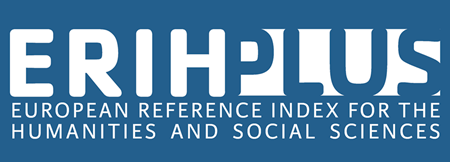A HISTORICAL PERSPECTIVE ON PHONOSEMANTICS AND PHONOSEMANTIC REALITIES IN THE GERMAN LANGUAGE
DOI:
https://doi.org/10.32782/folium/2025.7.2Keywords:
associative meaning, articulatory base, German language, phonological unit, phonosemantics, Charles Osgood’s semantic differential, psycholinguistic experiment, chi-squared test, synaesthesia.Abstract
Human language, its richness, precision, expressiveness, and imagery, has been shaped and refined over centuries through the collective experience of many generations of speakers. It may be assumed, as a working hypothesis, that most lexemes contain a heuristic potential, enabling them to disclose certain aspects of the essence of phenomena they denote. Linguistic units emerged not only as a result of deliberate communicative activity but also through subconscious processes. Consequently, nominative units often embody insights into the secrets of cognitive processes. This raises an important question: Does the concept represented by a linguistic unit correspond directly to the meaning of the word and its external phonetic form? Beyond the apparent structure of a word lies an invisible one, which in many ways determines the mechanism of language as a whole. Specific qualitative, quantitative, and positional characteristics of phonetic elements within a word regulate the possibility, or impossibility, of extrapolating certain areas of the semantic spectrum onto that phonetic form. At this juncture, discrepancies emerge between the real and the formal aspects of the connection between a word’s phonetic shell and its semantic content. The study of these features opens the way to a deeper understanding of how cognitive processes function in the consciousness of speakers. Phonosemantics, combining psycholinguistics, cognitive linguistics, and experimental phonology, offers an effective toolkit for analyzing the relationship between sound and meaning. The application of methods such as Charles Osgood’s semantic differential, statistical criteria like chi-square, and experimental techniques makes it possible to obtain scientifically grounded results and confirm the stability of certain associative connections. At the same time, further research highlights the dynamic nature of language, its ability to adapt to new conditions, cultural challenges, and social contexts. In this respect, the study of the German language acquires particular importance, as it demonstrates a wide range of phonosemantic correspondences. Identifying both universal and specific patterns helps to better understand not only the structure of an individual language but also the general principles of human linguistic cognition. Thus, research in phonosemantics has not only theoretical but also practical significance for modern linguistics, psychology, and intercultural communication, opening up new horizons in the study of language as a complex multidimensional phenomenon.
References
Левицький, В.В., & Кійко, С.В. (2006). Практикум до курсу «Вступ до германського. мовознавства». Вінниця : Нова книга. 200 с.
Кушнерик, В. (2008). Фоносемантизм: гіпотези і факти. Чернівці : Книги ХХІ, 420 с.
Кушнерик, В.І. (2017). Фоносемантизм. Теоретико-експериментальні витоки. Актуальні проблеми романо-германської філології та прикладної лінгвістики: науковий журнал / редкол. Кушперик В. І. та ін. Чернівці : Видавничий дім «Родовід», № 2 (15). С. 38–42.
Павлик, Н.В. (2022). Звукова організація тексту як спосіб емоційного впливу в художньому дискурсі. Науковий вісник Міжнародного гуманітарного університету. Серія: Філологія, 53, Том I, 136–139.
Chomsky, N. (1957). Syntactic Structures. The Hague : Mountons. 287 p.
Kronasser, H. (1952). Handbuch der Semasiologie. – Heidelberg: J. Groos Verlag, 204 s.
Osgood, Ch., Suci, G.J., & Tannenbaum, P.H. (1957). The measurement of meaning. Urbana : Univer of Illinois Press, 342 P.
Sapir, E. (1929). A study in phonetic symbolism. Journal of Experimental Psychology, 12(3), 225–239.
Taylor, I.K., & Taylor. M.M. (1965). Another look at phonetic symbolism II. Psychological Bulletin, Vol. 64, 6, 117–124.
Tsyntar, N., Kushneryk, V., & Tonenchuk, T. et al. (2022). Syntactic Mens of Expressing Emotivity (On the Basis of the English Literary Works).
World Journal of English Language, Vol. 12, 505–513.
Downloads
Published
How to Cite
Issue
Section
License
Copyright (c) 2025 Folium

This work is licensed under a Creative Commons Attribution 4.0 International License.











